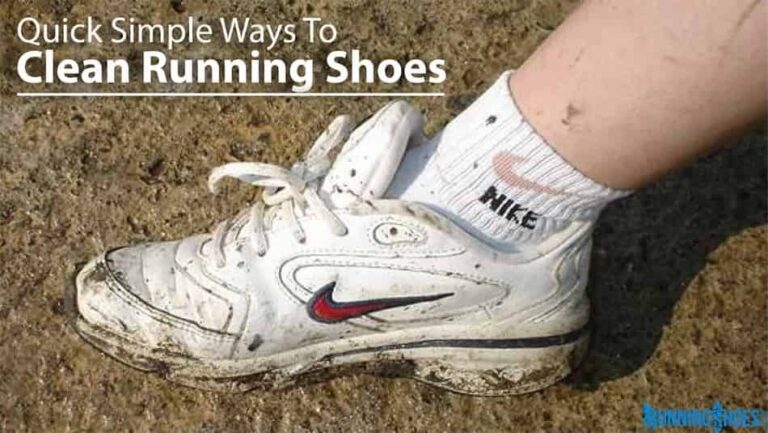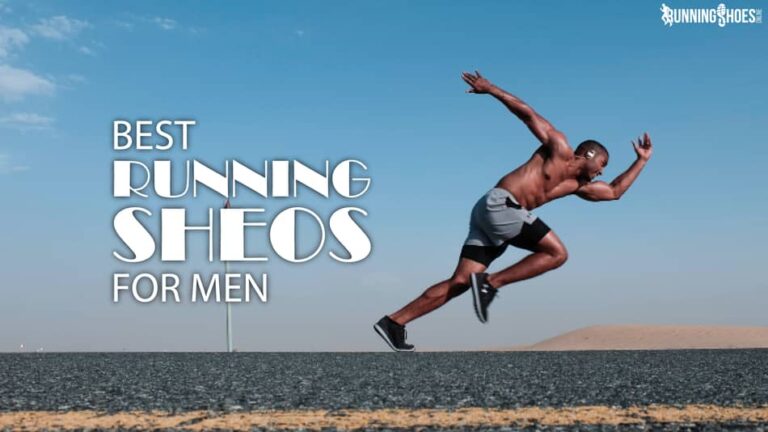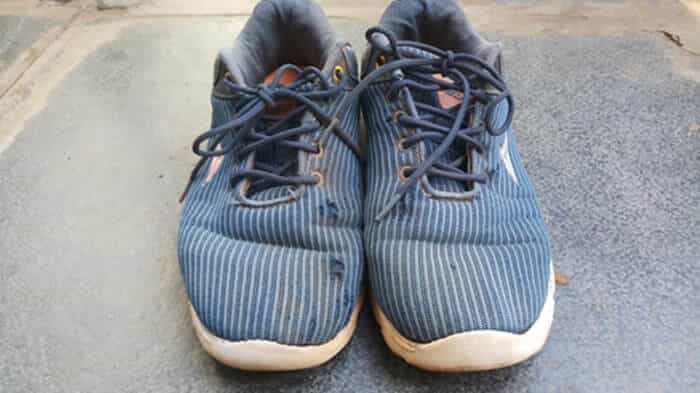Which Sole Material Is Best For Running Shoes: Ultimate Sole Guide
For picking the best quality and most durable running shoes, sole of the running shoe is the most important aspect that you must focus on while buying any running shoes.
But do you know which sole material is best for running shoes?
PU soles considered the best sole for running shoes. PU sole has the characteristic of breathability, water-resistant, great cushioning, and durability which makes it ideal for running, workout, exercising, and trekking shoes. They also provide great traction to the ground even on wet surfaces.
But don’t stop here, there is a lot more to know about sole of the running shoes.
Why Sole Material Is So Important?
![Which Sole Material Is Best For Running Shoes: Ultimate Sole Guide Which Sole Material is Best For Running Shoes [A Guide To Sole Material]](https://runningshoesonline.in/wp-content/uploads/2021/03/Which-sole-material-is-best-for-running-shoes.jpg)
The sole of a shoe is the part that comes in direct contact with the surface and faces all the various ups and downs. It increases the surface traction to makes your running journey so much happier.
And when it comes to running shoes, this becomes crucial that the sole material has to be of good quality. Because the sole of a running shoe deals with different surfaces than any other type of shoe sole.
It also provides your feet safeguard against shocks, impacts, and other injuries by providing soft cushioning comfort. Thus, it is crucial for running shoes that the sole material must be strong enough and durable.
Parts Of A Sole Of Running Shoes
The sole of running shoes is of three parts, and each piece has its benefits.
1. The Insole
The insoles, aka footbed, is the inner part of a shoe. It offers your feet a cushioning comfort and provides supports to your heels and arches.
Most of the shoes have removable insoles and can be replaced with custom footbeds.
2. The Mid Sole
As the name indicates itself, this part of the sole sits between the inner and outer sides. This sole is available in sports, running shoes, and sneakers.
The midsole of running shoes is made from polyurethane (PU) and ethyl vinyl acetate (EVA) material. It has air pockets and gets technology that provides your feet with extra cushioning comfort and support.
3. The Outsole
The outsole of the shoe is the bottom part that comes in direct contact with surfaces.
They are made from materials like rubber and leather, which provide the extra shoe durability, flexibility, and better gripping traction.
Types Of Sole Material
If you are looking for a shoe, look for the best material for a sole or else you will end up losing lots of cash from your pocket.
It is cash and your health because of an excellent sole demand to be reasonable grip control to the ground, good arch support, comfortable and lightweight.
But for that, you must know the best material for your shoe sole.
Right?
So, here are the sole materials that you can go for, and I will tell you the best sole material for your running shoe at the end.
1. Rubber Soles
If you ever see an RB tag in your running shoe, that defines that the sole is of sub-natural or hot press recycled rubber.
Even the rubber sole is further categorized into
A) Natural rubber
Natural rubber is comfortable and elastic to wear, but they are wearing resistance, so they don’t last long. Yet, natural rubber may help in indoor sports only.
B) Synthetic rubber
Synthetic rubber is a cheap rubber material of natural rubber. They are further classified into the following:
- Air rubber material for shock absorption and will break down on daily wearing.
- The sticky rubber material is flexible and provides good traction on wet surfaces. They used for Indoor sports.
- Natural rubber materials are made from recyclable materials.
- Carbon rubber material – Along with rubber, carbon collaborates, and carbon helps to wear resistance for running.
- Hard rubber is known for its toughness. Hard Rubber has worn resistance and resist slipping and used for playing basketball.
Bottomline
Rubber soles are classified into different categories, which makes it not so suitable for running. Because of not, every rubber is used for making a single running shoe.
2. EVA Soles
Ethylene-Vinyl Acetate is abbreviated as EVA, is a polymer plastic foam that provides elasticity, rubber-like flexibility, and most importantly lighter, which is why this material is used in making the midsole of most running and sports shoes.
Why EVA soles?
There are many reasons why you should go to EVA soles, and few of them includes:
- Flexible – The EVA material is softer than rubber material, so it provides more flexibility.
- Shock-resistant – EVA soles tend to absorb shocks while running and give a comfortable run.
- Durable – EVA soles are durable and last for a long time with little damage.
- Lightweight – EVA soles are pretty lightweight as they collaborate with wool.
- Best for winter – EVA soles are best for winter as it does not conduct heat and helps you keep warm.
3. PU Soles
Whenever you are considering buying a running shoe, things you must look for are the sole’s long-lasting durability, and most importantly, is it comfortable to wear or not?
And PU soles are one such sole that meets every requirement of hard-running shoes.
PU soled shoes are majorly used for running, trekking, exercise, workout, and more of hard terrain training as they are of high quality.
Reasons to get a PU sole shoe –
- Flexible – PU soled shoes are flexible, easy band comfortable to wear for all day long.
- Resist shock – PU soles are mainly made for shock resistance while you are running and are environmentally friendly soles.
- Wear resistance – PU soles are very hard and not easy to break even after high intense activities.
- Anti-skid sole – The PU sole shoes prevent slipping and grip the ground very well. Moreover, they provide high bending performance.
4. Leather Soles
Leather soles are made up of hard material. Thus, they cannot provide comfort and cushioning to the shoes, but adding layers to leather makes it durable enough to outlast rubber sole.
A sole must be in such a way that legs can be mold as per the situation, but leather sole doesn’t allow mold legs as they are hard.
The sole can be combined with a cork for giving flexibility and comfort but is not very suitable for running shoes.
Bottomline
Leather soles are great if worn informally or occasionally but are not so suitable for running shoes because of comfortability.
5. PVC Soles
Polyvinyl chloride is abbreviated as PVC. It is used for making many daily use materials like a raincoat, windows, and SHOE SOLES.
PVC outsole has the best insulation properties and is shock absorbers. Thus, they act as synthetic alternatives for leather and are cost-effective.
PVC can be molded in any shape, and that’s why they can use it as a shoe sole for casual and daily use.
Bottomline
PVC shoe soles are great for daily wear and tear but not for running and exercising because of comfortability and other factors.
6. TPR Soles
Thermoplastic rubber is abbreviated as TPR. TPS soles made for making automotive bushing and also for SHOE SOLES.
The TPR material is made by compounding the rubber granules from solid materials and used for the shoes’ outsoles.
TPR soles are excellent shock absorbers and resist slip even at the slippery or water surface and grips very well on the ground.
Apart from gripping, they tend to compromise on the shoe’s comfortability and are not for all day long wear.
Bottomline
TPR soles are great for outdoor use as an adventure and low-intensity activity. But they are not recommended for running or any high-intensity activities.
Comparison of the PU Soles Between Different Sole Materials of Running Shoes
Classifying different shoe soles will not make it clear which sole material is best for running shoes. But differentiating other sole materials will get you to the idea of sole material which is best for running shoes.
Although, we know that PU soles are the best sole material for running shoes. So, to find which sole material is best for running shoes, let’s compare PU sole material to the other to get a clear idea.
1. PU soles VS Rubber soles
As far as rubber soles’ durability are concerned, they are not up to the mark and cannot resist wear and tear usage during hard runs or jogging. In comparison, the PU soles are highly durable.
Thus, PU soles are wear-resistant and can be worn all day long, even after running. But, rubber soles are not so worn resistant, and it starts feeling uncomfortable.
2. PU soles VS EVA soles
As far as EVA soles are concerned, they are used for ages to make the shoes’ sole. They are highly elastic and comfortable under the feet. But, they can’t resist abrasion and compression phenomena.
Moreover, they can’t even resist dirt and quickly catch up with the soil. But, PU soles are capable of abrasion and compression and don’t catch up with the soil easily.
Thus, it makes PU soles widely used soles as the running shoe soles in the industry.
3. PU soles vs. Leather soles
Although leather is a comfortable material, it is valid up to the belt and watches strap only. When it comes to the shoe sole, leather is a rigid material and resists movement and flexibility.
Yet, they are more stylish, but they cannot compete for the breathable, insulation, and durable qualities of a PU sole, which is a significant factor for sports running shoes.
Despite the texture, the leather sole’s elasticity, PU soles, will always win in running shoe soles. And we will also recommend you to go for PU soles.
4. PU soles VS PVC soles
PVC material is majorly used for the production of pipes, and also for the shoe sole. The PVC soles are highly durable, provide insulation, resist water and abrasion.
But where PVC soles lack is in ventilation and cushioning, they also lack proper grip and texture. And these are the most crucial factor while selecting the sole of the shoe.
On the other hand, PU sole provides the best gripping and texture on the ground. Also, they are highly breathable. These qualities make PU sole an evergreen shoe sole on any conditions.
5. PU soles VS TPR soles
Thermoplastic rubber (TPR) soles are good at absorbing shocks, offer well grip, and provides good traction on wet surfaces.
But, TPR soles compromises with comfortability and wear resistance. So, they are not for daily and all day long wear shoe soles.
On the other hand, PU soles are comfortable, long-lasting, durable, offer good grips even on wet surfaces. And these qualities of PU soles make them worth investing in.
Bottomline
So, after looking at every aspect of different sole materials we reached this point that the PU sole material is the best sole for running shoes. And, if you face any confusion regarding the sole when you buy running shoes, then go for PU soles shoes.
Our Recommended Running Shoes with Long-lasting Sole:
FAQ: The Best Sole Material For Running Shoes
1. Which Sole material is long lasting?
Unlike rubber, EVA, PVC, and sole leather materials, Polyurethane (PU) sole considered the best sole material in terms of durability.
They have a lightweight and water-resistant nature, breathable for ventilation, shock-absorbing property, and better insulation.
2. Is rubber sole durable?
Rubber soles are considered as sole excellent material in terms of durability. Being available in different natures, they also water-resistant, flexible, and offers good surface stability.
3. Is rubber sole slip resistant?
The most shoe sole made from rubber with more grip for better traction, which makes it slip-resistant. But rubber-soled shoes fail as slip-resistant surfaces like oily, greasy, and moss floor.
4. Which sole is better PVC or rubber?
PVC sole is a type of plastic that makes it lighter and cheap than a rubber sole. But they have stiffness with sharp edges, are less flexible, and less breathable. So, it is uncomfortable for the feet and less durable in performance.
6. Which is the better PU sole vs PVC or TPR sole?
PU soles are considered the best sole material for its lightweight, insulation, cushioned, and durable properties.
While the PVC soles are less durable, they come with stiffness and sharp edges and are less comfortable to the feet.
And the TPR soles are the most used material and are lightweight, durable, and offer better comfort than PVC soles.
6. Are flat soled shoes good for running?
Flat-soled shoes are considered good shoes for indoor running, running on the treadmill, and plain surfaces.
But they won’t last long for outdoor running on surfaces like uneven rocky terrain areas and rough roads. Because these surfaces require a thicker, durable, and gripping designed sole for better surface traction.
Conclusion
It is your running activity and the surface which you are planning to run on will better determine which sole material is better for your running shoes.
So, if you are looking for a shoe for long-distance running on concrete roads, then EVA sole material is definitely the best option to go with due to its adequate cushioning comfort and lightweight nature.
Or, if you are looking for a shoe for running on the uneven ups and downs, rocky terrain areas, then the trial running shoes with rubber sole is ideal option to opt because of its toughnesss nature and durable property.
And, if you are looking for everyday lightweight running shoes and casual sneakers, then the shoe made of PU sole is the best decision to opt for.
We hope you liked our guide article on which sole material is best for running shoes and enjoyed reading this article.
If you found this article helpful, make sure to share it with your friends on social media. Or if you have any kind of suggestion or query, do let us know below in the comments.
We would love to hear form you about your feedback.
Articles you may also like:






